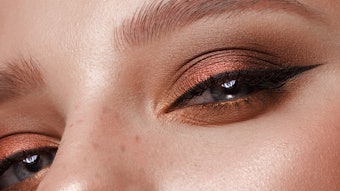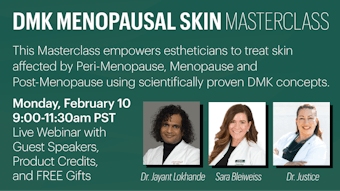
The medical aesthetic and medical spa industries are growing exponentially, with no clear end in sight. The increasing acceptance, availability and affordability of many minimally invasive cosmetic treatments has fostered what Sander Gilman, PhD, an American culture and literary historian, has named the “Era of Glamour.” This era ushers in the premise that medical aesthetic treatments are part of a normal routine that works to maintain a natural and healthy appearance.1 Following are some of the current trends in the field of aesthetic medicine, as well as a look to what its future may hold.
New vision of beauty
An internationally conducted study by Allergan, Inc.1 suggests that there is a change in women’s perception of their beauty. Of women surveyed, 83% revealed that they wanted to look as natural as possible in order to better reflect their personalities and expressions, and to protect their emotional well-being. This is good news for office-based practitioners. These findings coincide with the current esthetic market-drivers, including people’s desire and ability to minimize the effects of aging, as well as the new societal value of successful or healthy aging.
The expansion of aesthetic medicine
This proliferation of consumer acceptance has resulted in an upsurge of technological and treatment advances, establishing aesthetic medicine as a subspecialty, with a defined body of knowledge and a standard of procedural competence. This subspecialty is no longer limited to the fields of plastic surgery and dermatology, as many specialties are offering medical aesthetic treatments in order to better accommodate their patients’ esthetic needs. The American Academy of Anti-Aging Medicine has recognized the need to establish best practice standards in aesthetic medicine and in 2008 launched the Aesthetic Anti-Aging Fellowship, a seven-part didactic and hands-on clinical training series and certification program.
Core physicians, such as plastic surgeons and dermatologists, account for 60.1% of the medical aesthetic procedures performed in 2006 while non-core physicians, such as family practitioners, internists, and obstetricians and gynecologists, accounted for 33.3%. Through 2011, non-core physicians will gain 35.2% compound annual growth in medical aesthetic procedure volume.2 This expansion has caused many state and regulatory boards to move toward uniformity in licensure and training requirements. Additionally, best practice standards are emerging to ensure the safety and efficacy of aesthetic procedures.
Surveys show that patients prefer to have cosmetic medical treatments in a medical environment. According to the International Association for Physicians in Aesthetic Medicine, many women felt that nonphysician-owned medical spas were unsafe. Additionally, 78% of those surveyed rated medical credentials as very important when choosing an aesthetic treatment provider.3 In an Allergan-sponsored study taken in 2006,4 the reputation of the physician was just as important as environment in persuading clients to be treated in one office versus another. A physician-centered model that focuses on the physician-patient relationship will prevail in the medical aesthetic industry moving forward.
Injectables on the horizon
Facial injectables continue to dominate the medical aesthetic treatment market. Botulinum toxin and hyaluronic acid injections were the top two nonsurgical cosmetic procedures according to the American Society for Aesthetic Plastic Surgery (ASAPS) National Data Bank Statistics. Many of the injectable manufacturers, such as Allergan and Medicis Pharmaceutical Corporation, have initiated direct-to-consumer marketing campaigns to further substantiate their market position. These include branded messages and products, such as print advertisements, television commercials and patient brochures. A recent example of these campaigns would be Allergan’s “Express Yourself” promotion featuring its product Botox Cosmetic.
There are currently two botulinum toxin Aproducts undergoing U.S. Food and Drug Administration (FDA) trials. Medicis has recently submitted a biologics license application for Reloxin, which has been rejected by the FDA due to administrative deficiencies. The company refiled biological license application in March 2008. The typical response time frame is 10 months for approval. Mentor Corporation recently announced the approval from the FDA for phase III clinical trials for its botulinum toxin product PureTox. A unique feature of PureTox is its stability and ability to be stored at room temperature. PureTox is expected to receive FDA approval in late 2009 or early 2010.
There are many hyaluronic acid fillers currently undergoing FDA trials. These include a small gel particle filler, a filler specifically designed for lip enhancement and a large particle-size gel used for facial fat loss replacement. There are a number of hyaluronians formulated with lidocaine currently under trial and other long lasting hyaluronians are under consideration, as well.
Focus on resurfacing
Aesthetic patients are becoming more focused on the texture and pigmentary issues of their skin. Laser skin resurfacing is the fifth most popular nonsurgical cosmetic procedure, according the ASAPS National Data Bank Statistics. Fractional resurfacing continues to dominate the aesthetic laser market. Fractional resurfacing involves the creation of multiple microthermal zones that affect a fractional volume of tissue. The treated areas are surrounded by viable tissue that offers epidermal stem cells for rapid recovery. This innovative concept provides resurfacing with less risk and less downtime. There are two types of fractional resurfacing: ablative resurfacing, in which multiple microthermal zones are vaporized; and nonablative resurfacing, in which microthermal zones are coagulated.
Ablative. Ablative fractional resurfacing involves the excision or vaporization of columns of tissue. The untreated viable tissue offers epidermal stem cells that provide for more rapid healing. Additionally, the reduction in tissue volume allows for tightening to occur.
Nonablative. Nonablative fractional resurfacing involves the coagulation of tissue to variable depths, allowing the stratum corneum to remain intact resulting in less down time.
Body contouring
The market for body-shaping procedures has experienced tremendous growth, primarily due to the development of laser and light systems. It is predicted that body-contour procedure volume will increase 52.2% annually to more than 7.4 million procedures by 2010.5 According to the United States’ Centers for Disease Control and Prevention (CDC), obesity rates continue to climb because of factors such as urban lifestyles and lack of physical activity and exercise, as well as the availability of low-cost high-calorie convenience foods. Body contouring treatment modalities include mesotherapy, noninvasive laser and light body contouring devices, laser lipolysis and liposculpture.
The controversy regarding mesotherapy and injection lipolysis continues. The ASAPS issued a statement in late 2007 urging patients to avoid injectable fat loss treatments due to the lack of FDA approval for the procedures, as well as the lack of published scientific reports and clinical trials. Noninvasive laser and light body contouring devices employ modalities such as radio frequency, infrared, diode and rhythmic massage, focused ultrasound, broadband light and electroporation. Some progress is being observed with these devices; however, collectively, the treatments involve numerous sessions and it is still unclear as to how long the results will last.
The latest in surgical body contouring treatments involves the use of an infrared fiber optic laser for fat lipolysis. The interaction between the laser light and the adipocyte cause lipolysis with reduced bleeding. The laser’s effect on collagen can result in skin tightening. Currently, medical aesthetic practitioners are utilizing laser lipolysis for difficult or forbidden areas for traditional liposuction, such as the upper abdomen and upper thigh.
The gold standard for body contouring is lipoplasty. This surgical procedure is performed under local tumescent anesthesia and involves the physical removal of fat deposits from under the skin. Lipoplasty can be performed with a syringe or a suction device. The syringe technique, known as liposculpture, is more precise and less traumatic to the tissue. Liposculputure provides a safe, effective and permanent avenue for body contouring. Expect the trend of body contouring to continue to grow as patients desire youthful body contours to match their youthful facial enhancements.
A look to the future
The baby boomer demographic will continue to be the major consumer of medical aesthetic services, with Generation X not too far behind. There will also be a general trend toward health and wellness within this demographic. Anti-aging and wellness medicine will become more prevalent as people strive to look as young as they feel. The ideal, successful anti-aging center will recognize the synergy between aesthetic and anti-aging medicine, and provide strategies to optimize health, longevity and self-image. Centers that incorporate a menu of services which address the internal as well as external signs of aging will thrive.
Aesthetic medicine will continue to expand as the baby boomers and Gen-Xers age. This expansion will foster the advancements in effective technology, devices, products and treatments. Certainly the best is yet to come in terms what will be available to patients in anti-aging and medical aesthetic enhancements throughout the coming years.
REFERENCES
1. First Aesthetic Anthropology Survey of Beauty and Grooming Across Cultures, Allergan, Inc. (Sept. 19, 2007)
2. Primary Care and Medispa Expand Aesthetic Market, Medical Insight, Inc. (July 2007)
3. Aesthetic Medicine Consumer Study, International Association for Physicians in Aesthetic Medicine, (March 2007)
4. 2006 Gallup Poll, Allergan, Inc. (2006)
5. Body Shaping and Cellulite Reduction: New Technologies Expand Market Potential, Medical Insight, Inc. (November 2007)










